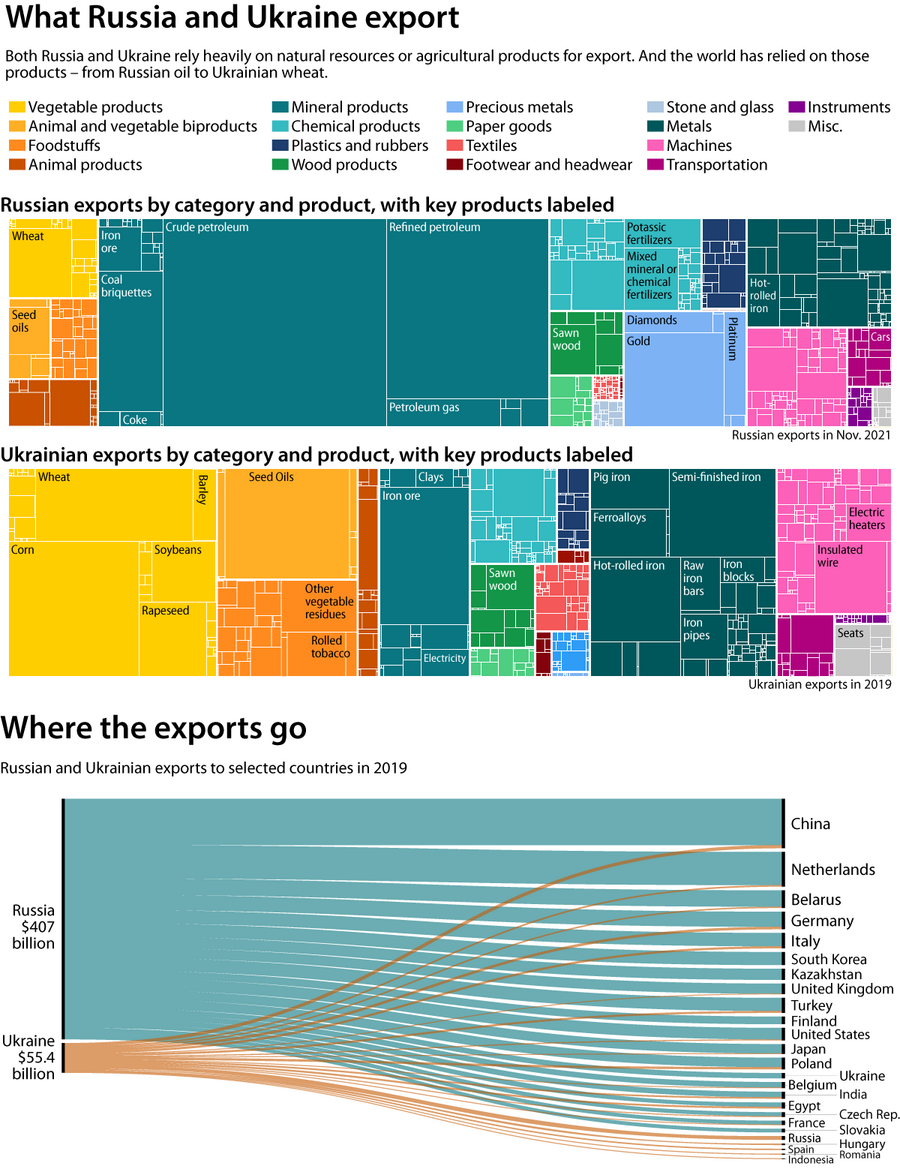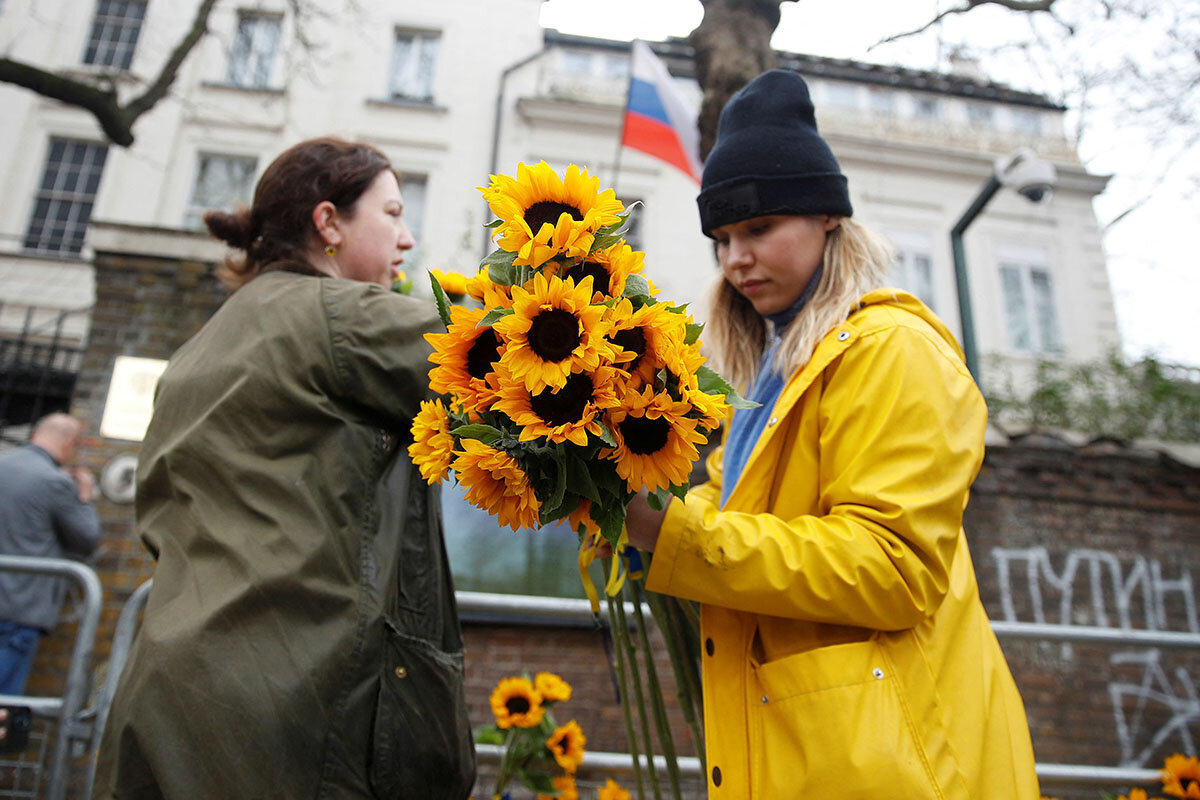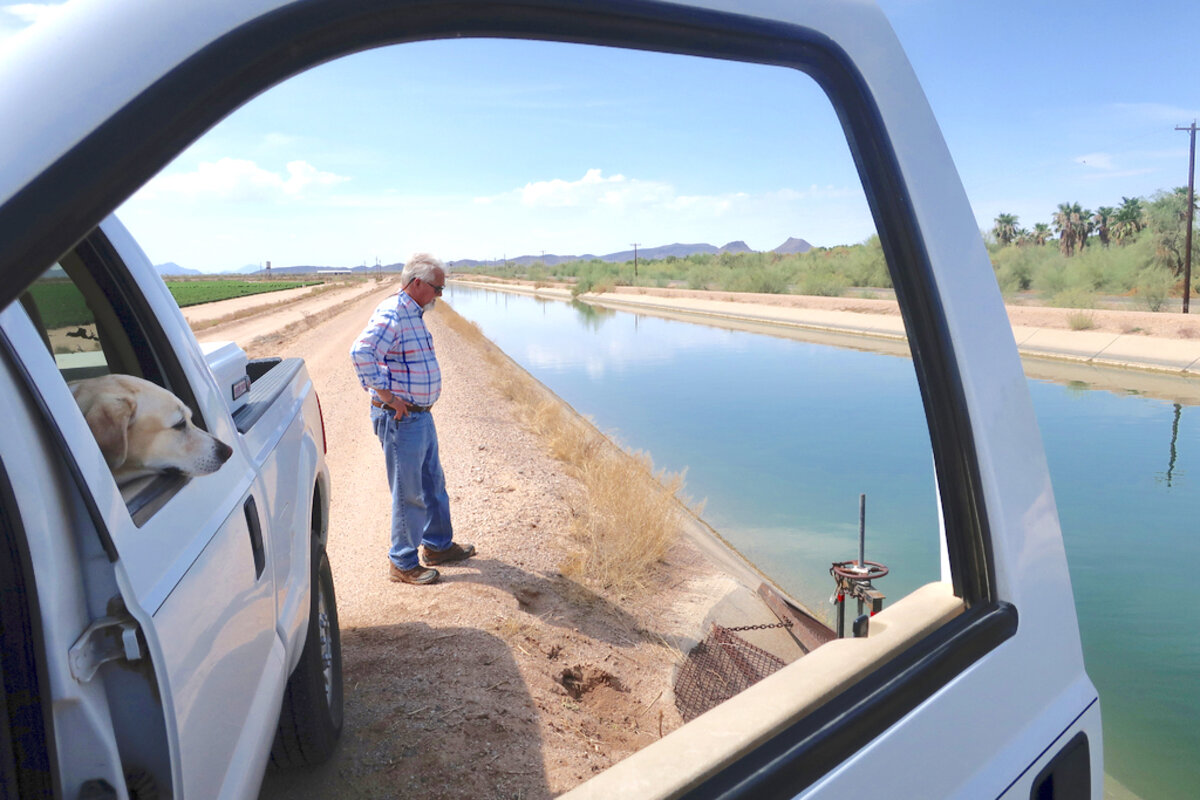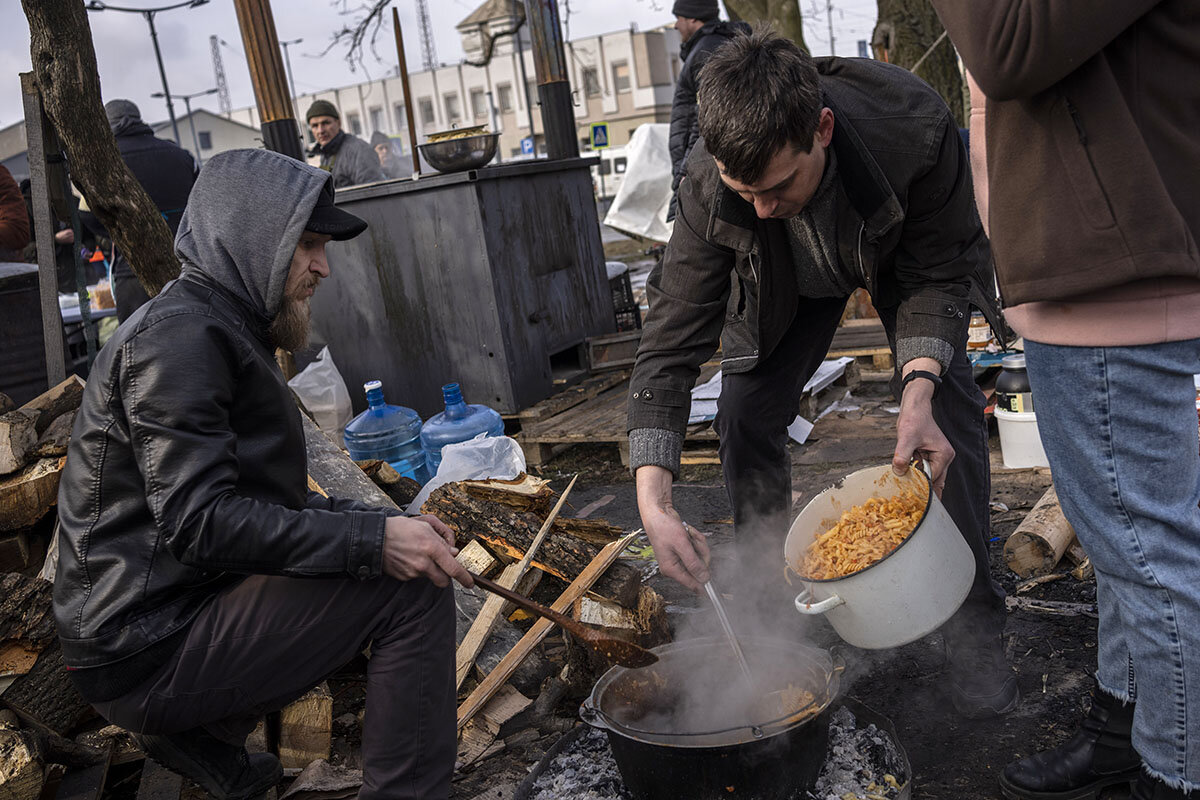Democracies worldwide have looked weak and divided, recently. In Europe, Ukraine’s fight for its freedom has put steel in their spines.
Monitor Daily Podcast
- Follow us:
- Apple Podcasts
- Spotify
- RSS Feed
- Download
 Mark Sappenfield
Mark Sappenfield
This week we’re answering questions surrounding the Ukraine invasion, so I reached out to Francine Kiefer, our Germany correspondent at the end of the Cold War, to ask her what she was seeing today. Is humanity a match for Russia’s military force?
Here’s her answer:
Russia’s war on Ukraine has transported me back more than 30 years to my time as the Monitor’s Germany correspondent, when I reported on the fall of the Berlin Wall on Nov. 9, 1989.
Of course, the context of that time differs greatly from today – notably, Moscow then had a leader who grew to embrace a people’s right to decide their own government, rather than one intent on forcibly re-creating an iron curtain. But here’s a core commonality: a citizenry’s brave insistence on freedom. That’s an essential quality for victory over tyranny. It’s what’s emerged in Ukraine.
As with Ukraine, it was the East German people themselves who were the heroes of that historic time. East Germans did not fight off an unprovoked invasion. But their persistent, peaceful protests in the face of real risk to their lives liberated their country from 40 years as a communist police state.
In that story, the citizens of Leipzig shine especially bright. On a critical Monday evening in October 1989, a throng of 70,000 people resumed their weekly protest march – despite a reinforced police and military presence prepared to forcibly disperse crowds. Rumors circulated of hospitals stocking blood supplies. Indeed, East German leader Erich Honecker had ordered forces to be prepared to fire on demonstrators. But the expected massacre never transpired. The Leipzig marchers inspired a nationwide explosion of demonstrations that could not be stopped.
Twenty years later, I returned to Germany for anniversary celebrations at the Brandenburg Gate in Berlin. In pouring rain, I listened to world leaders laud the East German people’s unstoppable self-determination. Most notable was the speech by Poland’s Lech Walesa, the former anti-communist dissident leader of the Solidarity workers’ rights movement, and first freely elected president of modern Poland.
As I remember it, he said Germany had the Polish people and Solidarity to thank – and then, after a pregnant pause, he went on to mention: and the Czechs in 1968, the Hungarians in 1956, the East German workers in 1953.
All of those uprisings were tragically squashed by Soviet armed forces, until finally, Poland’s succeeded, then East Germany’s, then a cascade of democratic revolutions. We don’t know what will become of Ukraine. But this we do know: You can’t get or keep freedom unless you stand up for it. Ukrainians are doing just that.












